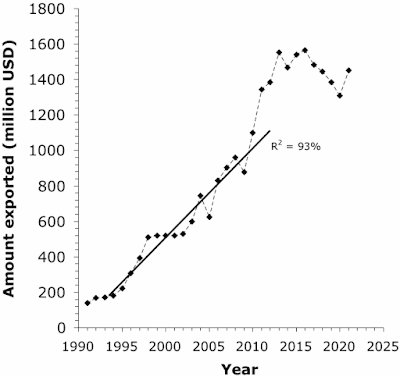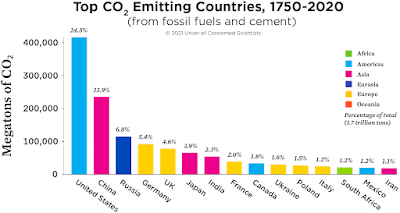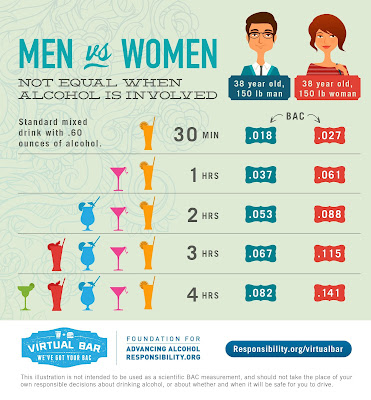A couple of weeks ago, I looked at
How bad are law violations in the US wine industry, and summarized the (sometimes very large) legal fines to members of the commercial wine industry. Well, fines are not the only possible (formal) outcome of violations of alcohol (and other) laws in the USA. Here, I look at the other three possible outcomes, which comprise the rest of the murky legal world of official wine regulation. It all seems a bit shady to me; but I am sure that there is a good reason for all of it.
The legal actions that I am referring to come from the Alcohol and Tobacco Tax and Trade Bureau (TTB), which is part of the U.S. Department of the Treasury (as pointed out by an anonymous commenter on my previous blog post). The TTB refers to these as
Administrative Actions, which are described as follows:
Adverse actions are taken to administratively resolve willful violations of alcohol and tobacco laws and can include:
- Voluntary Surrender
- Suspensions
- Offers in Compromise.
So, this includes violations of the Federal Alcohol Administration Act. It also, incidentally, involves non-payment of taxes (excise duty) related to the import and export of firearms.
When collating the online data, I allocated the official allegation to one of several categories, based on the specific allegation. For example, distributors sometimes have licenses for all alcohol beverages, but if they were accused of a violation involving “malt beverages” only, then it was allocated to “Beer”. “Wine” includes vineyards, wineries, warehousing, distributors, wholesalers and importers. “Spirits” includes industrial alcohol.
Let’s take all three of them, in order.
Voluntary SurrenderOfficial description:
Industry members can elect to voluntarily surrender their permit in lieu of administrative action being taken against their permit. This usually occurs after the industry member has been issued an Order to Show Cause.
There are no data listed on the TTB web page.
SuspensionsOfficial description:
The Internal Revenue Code (IRC), the Federal Alcohol Administration (FAA) Act and 27 CFR Part 71 provide for suspension of an industry member's permit if the permit holder has willfully violated any condition of its basic permit. An industry member can agree to a stipulated suspension prior to the initiation of a formal hearing. If an informal resolution cannot be reached, Section 204(e)(1) of the FAA Act allows for permit suspension after notice is given to the permit holder; a hearing is held; and, the agency’s charges are upheld.
The data listed online cover only Aug 2018 to Jul 2020. In those two years there were 34 suspensions listed, 32 of them from companies in the wine industry (plus one for beer and one for tobacco).
Suspensions can be a little as one day. They usually occur because it is cheaper than legally defending, at a formal hearing, the Order to Show Cause accusation of willful violation of the conditions of permit. Does this mean that these actions refer to smaller wine companies, which have less money available to fight legal actions? Or perhaps they are simply smaller violations, that require no big financial penalty? Or perhaps a 1-day suspension is simply no big deal?
Offers in CompromiseOfficial description:
Titles 26 and 27 of the United States Code contain provisions for the compromise of certain civil and criminal cases. In this context, a compromise is an agreement made between the Government and an alleged violator in lieu of civil proceedings or criminal prosecution. TTB generally considers offers in compromise for any violation of the laws and regulations it administers; and TTB will provide appropriate assistance to any person or business that wishes to make an Offer in Compromise.
The data listed are for Accepted Offers in Compromise, and date back to 2003. The idea is, apparently, to save everyone involved the expense (time and money) of having a public court determine the amount of the fine (these are referred to by the TTB as “potential litigation hazards”). So, the accused party officially makes an offer, and the TTB officially agrees to accept it (after some negotiation?). * The conclusion is apparently that “the amount is both commensurate with the nature of the violations and is sufficient to deter recurrence.” Suspensions (see above) may also be involved.
In many cases, the issue at hand was doubt as to liability (eg. miscalculation of credits, failure to timely file Excise tax forms, or unexplained inventory shortages), and also doubt as to collectibility of any monies owing to the government (eg. involving Pay-for-Play situations). Large Offers often involved a down-payment, followed by monthly installments. The defendant can negotiate all of this much less publicly than paying a court fine.
There are 314 accepted Offers listed, with 74 of them from companies in the wine industry (24%), for an average of $26,500 each (median = $15,000). This compares to 60 Offers from the beer industry (median = $38,000), 87 from the spirits industry (median = $35,000), 54 from the tobacco industry (median = $38,000), and 23 from the firearms industry (median = $100,000). There are a few miscellaneous ones, as well.
The smallest Offer was $1.00, while the largest was $28,578,944.69. We can compare this (incredibly precise number) to what I listed in my previous post on legal violations within the wine industry. In the current case there were 18 Offers of at least $1 million, whereas for the court fines there were only 5. However, none of these high Offers were from the wine industry — 6 were from the tobacco industry (including 1 of the top 3), 5 from the beer industry, 4 from the spirits industry (including the 2 of the top 3), and 3 from the firearms industry. The biggest offer explicitly from within the wine industry was $144,000. So, the wine industry gets fined, rather than making Offers!
Interestingly, one-third of the cases occurred during 2008-2011. A lot of them seemed to involve what the TTB sometimes refers to as a “slotting allowance ... in order to obtain favorable product placement and display space, in violation of the tied house provisions”. These often incurred some of the biggest payments, most often involving beer (on tap). **
The idea of avoiding repeat occurrence of violations has not always been successful. For example, in 1991 the McKenzie River Corporation (a producer of malt-related products) was fined when it was sued by the Attorney General of New York over advertisements allegedly directed at underage children (
When hip-hop first went corporate). The suit was settled out of court; but the company was also fined and temporarily shut down by the Bureau of Alcohol, Tobacco and Firearms. Well, in 2007 it was involved in an Offers in Compromise with the TTB, for publishing print advertisements implying that its alcohol beverage product has a stimulating or energizing effect on the consumer (
TTB suspends McKenzie River permit for misleading health-related advertising claims). The TTB has clearly stated that alcohol beverage advertisements making energy claims are misleading health-related statements. Some people never learn.
Some of the Compromises have been quite general, involving several companies simultaneously. The biggest appears to be a group from 2008 and 2009. Nine different “importers or wholesalers of wine, distilled spirits and/or malt beverages” were alleged to have, during either 2003-2004, or 2003-2005 or 1996–2007 (depending on the company): “violated the conditions of [their] basic permits by furnishing or giving money, free goods, and/or other things of value to Skyline Marketing, Inc., a merchandising / promotional company, and/or Sam’s Wine & Spirits, Inc. a retail liquor dealer. The government further alleged that [the companies] paid or credited the above-referenced entities for advertising, display or distribution service, and/or purchased or rented display, shelf, storage or warehouse space.” That is, Sam’s received payment or credit either directly, or else indirectly through Skyline. The nine Offers were: $3,000, $10,000, $18,000, $30,000, $40,000, $110,000, $130,000, $225,000 and $225,000 (which adds to more than $790,000). We are not told why the big differences in payment.
A really beautiful example involved three companies “engaged in the business of importing and selling firearms”, all of which during “the period beginning January 2000 and ending June 30 2007 failed to pay excise tax for the importation of firearms.” Isn’t this technically smuggling? Quite an oversight, for all of 7.5 years! It cost them a total of $750,000.
A particularly good day for the TTB was 02/02/09, on which date they received three Offers from The Boston Beer Company for a total of $1,192,840, plus two Offers from Samuel Adams Brewery Company for a total of $2,507,160. Quite a windfall. The wine industry was never like these brewers!
ConclusionYou can probably now see why I suggest that this is somewhat murky. There
is a public record of these illegal events, but it is tucked away where the media will generally ignore it. The outcome is nowhere near as public as the results of court cases — court cases involve a fine, whereas these cases do not. The media thus seem to be far less interested. For example, does anyone remember any fuss being made about the Skyline / Sam’s Wine business discussed above? I can find no online media commentary from that time, in spite of the magnitude of the financial penalties involved.
This whole business may become even more problematic in the near future. Different US states treat alcoholic beverages in different ways — for example, a malt seltzer and a spirits seltzer might seem identical to the customer, but they can be subject to different laws in different states (
A better way to define alcohol product types). Under these circumstances, trying to stay legal can be tricky.
* As one example: the “Amount of Liability Being Compromised” was $51,931.70, while the “Amount of Offer” was $15,000.00. The TTB could fight in court for the first amount, or immediately accept the second one. As a second example: the “Amount of Liability Being Compromised” was $97,527.31, but the “Amount of Offer” was $57,000.00, which was the amount of the company’s registered cash bond, since the winery had discontinued business between the time of the alleged violation and the TTB action.
** With some very careful wording:
“furnishing things of value to various retailers in order to obtain favorable product placement and shelf space”
“use of third parties (business entities and payment services) to provide money or things of value to retailers for placement of malt beverages”
“payment to the third-party promotional company or affiliate [that] resulted in the retailer, or an officer, employee, or representative of the retailer, receiving payment for advertising, display, and distribution services related to [a particular] brand of malt beverages ... Specifically, [the accused] made payments, in part, to secure tap handles”




















